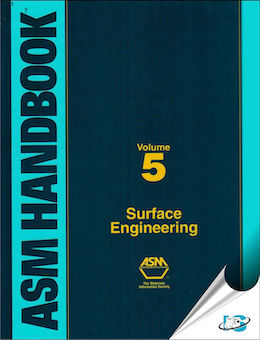
-----
Cleaning and etching of titanium
Q. I was wondering if anyone could give me any Idea on the cleaning of a Titanium pipe. I have used Ammonium Bifluoride before, but it is just to harsh. I was wondering if the was a non-fluoride type of cleaning.
Jon Kuehler- San Diego, California, USA
2000
A. It would help if we had some idea of the size of the pipe, are you cleaning the outside or OD and ID. What do you mean by cleaning? Removal of dirt or removal of the oxide layer.
In the aerospace industry, we used a soak in a hot caustic bath, typically of a deruster makeup and then rinsed and went into a nitric acid-Hydrofluoric acid mixture. Bifluoride can be substituted for the HF for a much safer chemical. If it started with a reasonable surface, this will bring it out as bright as a new dime. Bifluoride by itself is a poor solution.
- Navarre, Florida
2000
A. Are you trying to remove the native oxide with the ammonium bifluoride? If not, what are you trying to do here?
If you are prepping for anodising & need to remove the surface oxide, there are only a couple chemicals aggressive enough for the task, and the fluorides are about all of them. If you are prepping for welding or for cosmetic reasons, then you may wish to switch to commercial aluminum cleaning solutions.
Sorry, but not really enough information was provided in your question to be more specific.
Surface Conversion Sciences Corporation - Bellefonte, Pennsylvania
2000
2001
Q. I'm looking for Ti-6Al-4V and the acid pickling process done on it. If there is any information you can let me know.

Esra Baydemir
medical equipment manufacturing/fresh chemical engineer - Izmir, Turkey
A. See the Metals Handbook, 1954 Supplement, American Society for Metals, Cleveland, Ohio. for etching reagents for titanium and titanium alloys, also for electro polishing solutions.

Tom Pullizzi
Falls Township, Pennsylvania
2001
Q. I have been looking into using the titanium alloy Ti-6Al-4V as a pressure vessel material to encase helium. I have done a lot of poking around about how to get all of the hydrocarbons and contaminants from the titanium, but all I can find are nitric and HF acid etches. Along with high temperature baking, would it be safe to say that the virtually all hydrocarbon deposits inside the vessel would be evacuated? Any input into the cleansing and preparation of titanium would be much appreciated.
Jess L.NASA/Goddard Space Flight Center - Greenbelt, Maryland, USA
2003
A. NASA had a specification for this. Saw Ti tanks the size of large beach balls made for NASA (at a facility in CT) over 10 years ago. It was an alkaline soak followed by a nitric-HF etch. Lots of DI rinsing. Some companies will not let you use TCE or similar chlorinated solvents for vapor degreasing. Some companies are paranoid about chlorides in rinse water. When you say pressure vessel, what size and what pressure?
James Watts- Navarre, Florida
2003
![]() Thank you very much for your info. I'm looking a 2000 psi vessel with a capacity of about 20in^3. So it's small compared to beach balls. Thank you again.
Thank you very much for your info. I'm looking a 2000 psi vessel with a capacity of about 20in^3. So it's small compared to beach balls. Thank you again.
NASA/Goddard Space Flight Center - Greenbelt, Maryland, USA
2003
A. I recommend reviewing the content of ASTM B600, Standard Guide for Descaling and Cleaning Titanium and Titanium Alloy Surfaces. It is divided into sections called Processing Soil Removal, Blast Cleaning, and Pickling and Descaling. For soil removal, alkaline cleaning is recommended, including electrolytic alkaline cleaning, where the workpiece is either anodic or cathodic. Acid pickling (HF + HNO3) is recommended for scale removal.
Also, MIL-H-81200B, Heat Treatment of Titanium and Titanium Alloys has recommendations on surface cleanliness prior to heating. Halogenated solvents and methanol are prohibited from being used prior to heat treatment, unless followed by alkaline cleaning or acid pickling.
- Troy, Michigan
2003
Cleaning 6AL4V titanium plate after grinding
Q. Can you please provide some direction as how to effectively clean titanium parts after grinding, which uses VG550 synthetic grinding fluid? These parts will go through another grinding operation later so it's imperative that there is no residue remaining that could adversely affect the next grind or the titanium itself.
Julie Spencemetal shop employee - Hillsdale, Michigan, USA
April 7, 2010
|
A. Removal of typical soils and non-adherent surface contamination from Titanium can be done using hot alkaline cleaners (~ 80-85 °C) or non-chlorinated solvents like acetone ⇦ on eBay or Amazon [affil link] Flammable! , toluene, or methyl ethyl ketone (MEK). Ultrasonic cleaning or rinsing is recommended from maximum removal of embedded contamination. Titanium suppliers like Timet have good technical information available on their websites as well. Toby PadfieldAutomotive component supplier - Michigan, USA April 12, 2010 A. Ultrasonics with an appropriate solution might be one approach. Another would be to use aluminum oxide grit wheels to grind and then soak the ground part in hot caustic cleaner solution with agitation. This will dissolve most of the aluminum oxide particles. Periodic reverse would add to the surface cleaning/agitation, but it involves more time and money. James Watts- Navarre, Florida April 12, 2010 |
Q. I want to bond strain gages to titanium 6Al4V (grade 5). I have been told that titanium absorbs metalworking fluids. To remove the fluids, I must clean with mild soap, rinse, bake at 350 °F for 2 hours, and then repeat this process at least 4
times to boil out the metalworking fluids.
Can anyone confirm this process.
I would prefer to ultrasonically clean the part in a strong alkaline clear at about 160 °F.
Any comments will be appreciated
shop employee - Woodland, California, USA
March 2, 2019
Q, A, or Comment on THIS thread -or- Start a NEW Thread
